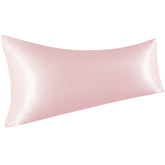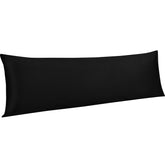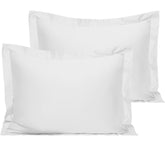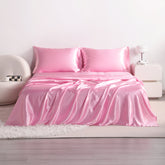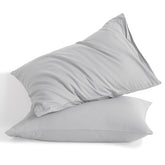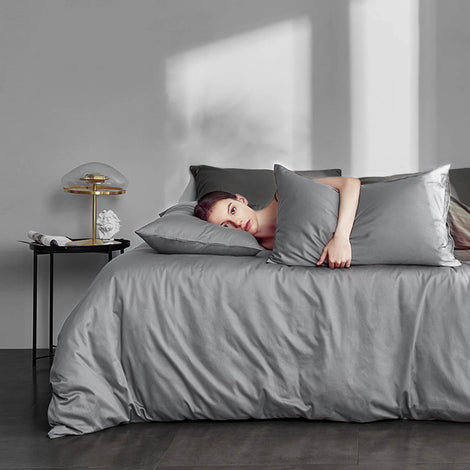How Bedding Affects Your Sleep: The Impact of Materials and Comfort
Did you know that your bedding plays a crucial role in the quality of your sleep? Research shows that bedding affects sleep quality by up to 40%. The fabric’s moisture-wicking properties, its temperature regulation, and how it feels against your skin are key factors that influence sleep comfort.

Why Bedding Matters for Sleep
One of the most important factors in achieving a good night’s sleep is the temperature and humidity of your bedding. In winter, the combination of cold air and dry indoor heating can disrupt your sleep, making it harder to fall and stay asleep. Besides physiological and psychological factors, your bedding’s temperature and moisture levels are likely contributing to sleep issues. In fact, studies suggest that bedding can influence sleep comfort by more than 40%.

A Simple Test: The Impact of Fabric on Heat Retention
I conducted a test where I placed a smooth fabric on a device that simulated human skin at a surface temperature of 33°C (91.4°F). The fabric consumed a significant amount of heat, meaning the body had to work harder to release heat to maintain comfort—something that clearly disrupts sleep. Cold temperatures can directly stimulate the brain, making it impossible to drift off.
Key Factors That Affect Bedding Temperature and Humidity
-
Moisture Absorption
The moisture-wicking ability of your fabric is critical, especially in winter when indoor air tends to be dry. In colder climates, static electricity is common, which is why many bedding sets now include conductive fibers to help manage static. However, synthetic fabrics, such as polyester-based fleece, often struggle with moisture absorption and breathability. If you’re looking for something more comfortable, consider brushed cotton as it offers better moisture-wicking properties.

2. Thermal Comfort
Winter bedding needs to offer warmth without overheating. That’s why many people prefer brushed cotton during the colder months. The soft, warm touch of brushed cotton mimics a natural warmth (around 32°C / 89.6°F), perfect for ensuring you feel cozy as you drift off to sleep. However, the warmth provided by brushed cotton is highly dependent on the quality of the fabric. Higher-quality brushed cotton feels plush and doesn't shed easily, providing both warmth and comfort throughout the night.
When choosing brushed cotton, keep in mind that thicker, coarser fabrics may shed more fibers, particularly in darker colors. For optimal comfort, choose fabrics with a finer texture in lighter hues, which are less likely to shed.

Conclusion
Bedding affects more than just aesthetics—it directly influences the quality of your sleep. When choosing your bedding for colder months, consider factors like fabric breathability, moisture-wicking properties, and thermal comfort. Opting for high-quality, breathable materials like brushed cotton will help regulate your body temperature and ensure a peaceful night’s sleep.
Editor’s Picks
Ultra Soft Satin Body Pillowcase – Smooth & Cozy with Envelope Closure|NTBAY ®️
- $13.99
$23.99- $13.99
- Unit price
- / per
- $13.99
$23.99- $13.99
- Unit price
- / per
-
Black
-
White
-
Ivory
-
Pink
- RedNavy BlueYellowKhakiPurpleBrownDark GreenLight GrayAqua BlueCharcoal GrayDark GrayLight PurpleSlate Blue
Cotton Body Pillowcase with Envelope Closure|NTBAY®️ - Black
- $25.99
$29.99- $25.99
- Unit price
- / per
- $25.99
$29.99- $25.99
- Unit price
- / per
-
Black
-
White
-
Ivory
-
Pink
- RedNavy BlueYellowKhakiPurpleBrownDark GreenLight GrayAqua BlueCharcoal GrayDark GrayLight PurpleSlate Blue
-
White
-
Red
-
Navy Blue
-
Light Gray
- Dark GrayBlackDark GreenPinkYellowAqua Blue
2 Pack Soft Cotton Pillow Shams|NTBAY®️ - White
- From $26.99
$29.99- From $26.99
- Unit price
- / per
- From $26.99
$29.99- From $26.99
- Unit price
- / per
-
White
-
Red
-
Navy Blue
-
Light Gray
- Dark GrayBlackDark GreenPinkYellowAqua Blue
-
Pink
-
Silver
-
Wine Red
-
Dark Green
- YellowGrayGolden BrownRoyal BlueNavy BluePurpleOrangeBlackWhiteSea Green
3/4 Pieces Silky Satin Twin Cooling Soft Bed Sheet Set|NTBAY®️ - Pink
- From $40.99
$40.99- From $40.99
- Unit price
- / per
- From $40.99
$40.99- From $40.99
- Unit price
- / per
-
Pink
-
Silver
-
Wine Red
-
Dark Green
- YellowGrayGolden BrownRoyal BlueNavy BluePurpleOrangeBlackWhiteSea Green
NTBAY 2-Pack Cotton Pillowcases – Soft, Smooth & Breathable
- From $17.99
$26.99- From $17.99
- Unit price
- / per
- From $17.99
$26.99- From $17.99
- Unit price
- / per
